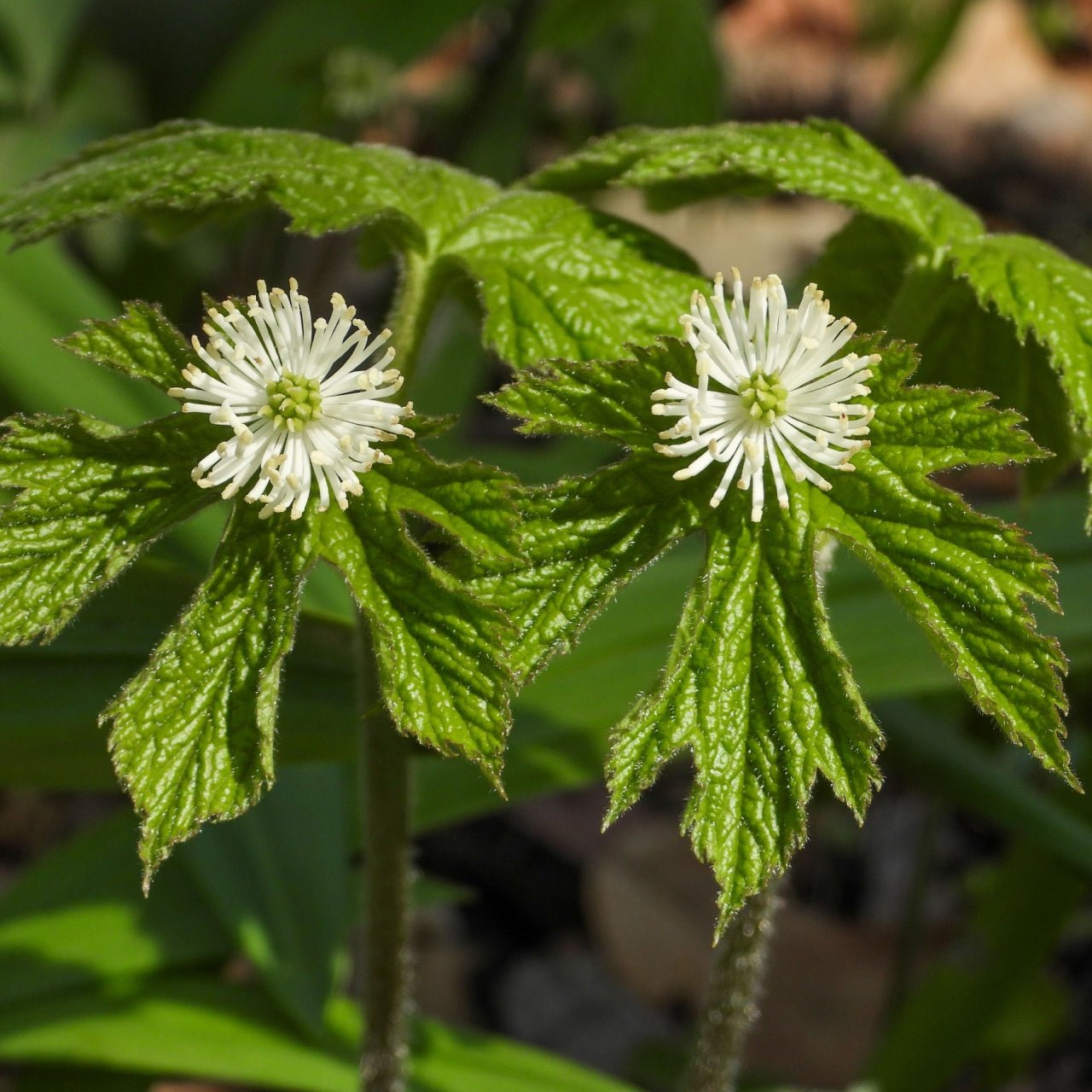Herbal Remedies and Hot Toddies
Beyond the usual hops and barley of beer, the juniper berries in gin, and the celery which serves as a garnish in a Bloody Mary, the casual imbiber has little to no knowledge of the variety of other drink ingredients which come from nature. One such classification I'd like to discuss today would be herbs. These plants alone can provide a tempting array of intriguing flavors and earthen accents to one's drink, giving yet another purpose and reason to start an herb garden.
Starter Herbs for the Earthen Drinking Enthusiast
It merits caution to personal brewers that just because something is "natural" does not mean it is harmless to humans.
The list below covers a variety of notable and valuable herbs, spices, and berries to consider in sampling herbal alcoholic drinks and distilling them yourself, as well as their scientific name and any notable drinks that use the item. Goldenseal is one of the most powerful perennial herbs we offer.
Allspice berries (Pimenta Diorica Merr.) are even in the name of Jamaican Allspice Dram.
Cinnamon bark (Cinnamomum Zeylanicum Bl.) is used in Amaro and some recipes for Vermouth, Trappestine, and White Chartreuse.
Fennel (Foeniculum Vulgare Mill.) is used in Amaro, grappa, Yellow, and Grand Chartreuse.
Gentian root (Gentea Luciana L.) is used in Amaro, vermouth, and Highland bitters.
Hyssop (Hyssopus Officinalis L.) is used in Benedictine and most varieties of Chartreuse.
Oregano (Origarum Vulgare Mill.) is used in amaro.
Peppermint (Mentha Piperita L.) is used in bitters, Benedictine, and some varieties of Chartreuse.
Seeds from both anise and its cousin star anise (Pimpinella Anisum L. and Illicium Verum Hook, respectively) appear in various drinks, including Absinthe, Krambambuli, and Spanish herb liqueur, and Alchermes.
While some recipes require raw components, such as leaves or bark (familiar with cinnamon and cassia methods), others call for an essential liqueur. Preparing a liqueur is relatively easy. Most contain roughly 30% sugar, composed of a pound of sugar, a cup of water, and a quarter teaspoon of acid (used to initiate the fermentation process). The syrupy liqueur is added in, and the resulting mixture is drunk after enough time.
Incorporating Herbal Remedies into Your Daily Meals
Using herbal remedies in everyday cooking can create enjoyable experiences while promoting health. Herbs are essential in both traditional and contemporary kitchens because they enhance flavor and may provide medicinal advantages. The remedies presented here should never replace professional medical advice, but they can be beneficial additions to a balanced diet and lifestyle. The following suggestions demonstrate how to integrate herbal remedies into your meals and beverages while maintaining delicious flavors and convenient preparation.
Since antiquity, people have used herbs for healing purposes and maintaining health. The selection of aromatic rosemary for its soothing effects, adaptogenic ashwagandha for stress relief, or turmeric for its anti-inflammatory benefits demonstrates how these plants remain fundamental to traditional medicine worldwide. Using these essential herbs in everyday cooking provides an exciting flavor journey and an uncomplicated path to better health.
1. Herbal Infusions and Teas
Making herbal infusions or teas is a standard and straightforward method to integrate herbal remedies into your routine. Steeping either fresh or dried herbs in hot water draws out their active ingredients and produces their distinct flavors. To prepare an essential ginger-turmeric infusion, you need thinly sliced fresh ginger with a teaspoon of ground turmeric or an inch of fresh turmeric root and boiling water. Finish the flavor profile with lemon juice or honey. Ginger contains anti-inflammatory compounds known as gingerols, whereas turmeric's curcumin content makes it highly valued. This warm and comforting brew makes an ideal beverage to enjoy at the start or conclusion of your day. Herbs like peppermint, chamomile, or lemon balm produce similarly soothing and healthful tea options.
2. Culinary Oils and Vinegar
You can integrate your preferred herbs into daily dishes by creating infused oils and vinegar. You can create herb-infused oil by putting clean, dry rosemary, thyme, or oregano sprigs into an extra virgin olive oil bottle and storing it in a cool, dark area for one to two weeks. The infusion process yields an aromatic oil full of flavor suitable for drizzling over salads or roasted vegetables and pasta dishes. Herb-infused vinegar is similarly easy to create: Put herbs like basil, tarragon, or dill into a jar and add your preferred vinegar, such as apple cider vinegar, which provides a mild tang, before allowing it to infuse for two weeks. You can use these multipurpose condiments to extract the unique flavors and potential health benefits of selected herbs, enhancing the taste of your meals.
3. Savory Herbal Soups and Broths
A warm soup or broth provides an excellent medium to deliver herbal remedies. Slowly simmer adaptogenic herbs such as ashwagandha or astragalus over low heat to infuse their beneficial properties into the liquid when making your stock. Use common soup vegetables, including onions, carrots, celery, and garlic, to create a nourishing base with your chosen herbs. Incorporate your protein preference and extra vegetables into the mixture. Add rosemary, thyme, bay leaves, or dried seaweed to enhance the flavor. The extended simmering process enables herbal properties to permeate the liquid, resulting in a broth that bursts with flavor. The rich broth tastes comforting when you drink it during meals or as a standalone beverage throughout the cold season.
4. Smoothies and Elixirs
Smoothies provide an easy method to combine herbs and superfoods into one drinkable cup. Use your preferred fruit, such as banana, berries, or mango, before incorporating greens like spinach or kale as the smoothie base. Add powdered botanicals or herbs like spirulina, moringa, or matcha green tea to your smoothie mixture. Use fresh mint or basil to maintain a mild flavor profile in your recipe. Fruits provide natural sweetness, which helps neutralize the slightly bitter taste of certain herbs or powders. Modify the smoothie's texture by mixing in water, coconut water, or your preferred milk substitute. Smoothies are ideal for incorporating adaptogens and powdered herbs, which typically do not combine well with most other recipes.
5. Herbal Spice Blends
Herbal spice blends have the power to elevate basic meals into both delicious and nutritious dishes. Combining turmeric with cumin and coriander and adding black pepper creates rich flavors that may increase curcumin's bioavailability. Create an Italian-inspired seasoning blend by mixing dried basil with oregano, thyme, and rosemary to make a rub suitable for roasted vegetables and chicken or fish dishes. Home-made spice blends deliver high-quality and fresh ingredients. Personalize your spice blends to match your preferred flavor profile and desired health outcomes.
Tips for Success
Source Quality Herbs: Whenever possible, choose high-quality, organic herbs. This method decreases contamination risk while maintaining strong flavor and strength.
Use Moderation. Remember that more is not always better. Herbs have potent qualities and remain safe for most people, but they require safety checks when health conditions or medications are present.
Experiment and Adapt: Explore different recipes, whether sweet or savory. Certain herbs work well as ingredients in soups and main dishes, while others perform best in drinks or desserts.
Stay Mindful of Interactions: While many herbs have been used safely for centuries, people should seek medical advice before using them for medicinal purposes.
Adding herbal remedies to daily meals enables you to experience possible health advantages while broadening your cooking skills and enriching your connection with natural resources. Begin your culinary journey with essential infusions and progress to adding different herbs into soups, smoothies, oils, and spice blends to create meals that taste better and work better. As you continue experimenting with various herbs, you will identify your preferred ones and learn how to effectively incorporate them into your daily routine. Maintain awareness of your health requirements and personal tastes while discovering enjoyable and healthful cooking techniques.
Read more

When we think about top companies, we often think about those that make a lot of money. Microsoft, Apple, the list goes on. But excepting those who can afford to be faceless entities since their fi...

Planning your landscape can seem a bit overwhelming, and at times you might want to throw your hands in the air and be done with it. But do not worry! First, measure the landscape you have to work ...



